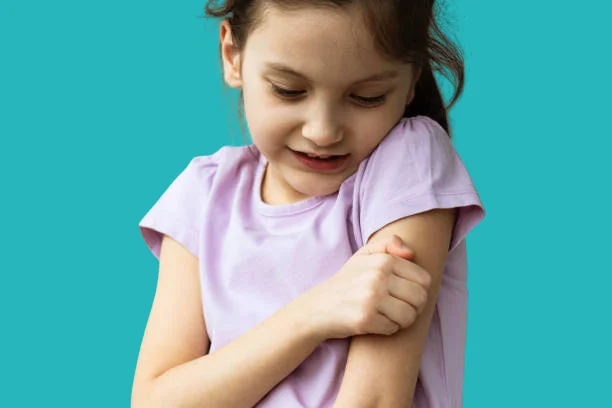Many children suffer from various types of allergies from their early years, which are caused by a weakened immune system.
The causes, symptoms, and treatment of allergies vary depending on the type and severity, and this is what we will learn about in the following article.
What are the types of allergies in children
There are several types, depending on the child's immune system response, including:
- Chest allergies.
- Skin allergies.
- Nasal allergies.
- Eye allergies.
- Food allergies.
Causes of allergies in children
The causes of allergies in children vary depending on the type of allergy, but the most important causes include:
- Genetic factors.
- Climate changes.
- Use of certain medications.
- Exposure to cigarette smoke.
- The child consuming allergy-causing foods.
- Exposure to dust, perfumes, or animal hair.
Allergy symptoms in children

These symptoms appear as a result of the child's immune system responding to certain triggers, and they vary from one child to another depending on the type of allergy. The most important symptoms include:
- Frequent sneezing.
- Itching and skin rash.
- Coughing and shortness of breath.
- Swelling of the face or lips.
- Runny or blocked nose.
- Abdominal pain with vomiting or diarrhea.
- Red eyes with excessive tearing.
Methods of treating chest allergies in children
This type is also known as asthma, and its treatment primarily depends on:
- Immunotherapy.
- Antihistamine medications.
- Medications containing cortisone.
- Bronchodilator medications.
Methods of treating skin allergies in children
Skin allergies are also called eczema, and the treatment aims to soothe itching and skin inflammation, including:
- Moisturizing the skin.
- Bathing with lukewarm water.
- Antihistamine medications.
- Using cotton clothing for the child.
- Topical creams containing cortisone.
- Avoid perfumes or soaps that irritate the skin.
Methods for treating nasal allergies in children
Also known as rhinitis, treatment aims to alleviate symptoms such as runny nose and itching. These methods include:
- Saline nasal wash.
- Antihistamine medications.
- Ventilating the room and avoiding dust.
- Nasal sprays containing cortisone.
- Avoiding pets if they are the cause.
Methods for treating eye allergies in children
Treatment is used to relieve itching, redness, and pain that the child may experience. Treatment methods include:
- Applying cold compresses to the eyes.
- Avoiding dust and smoke.
- Antihistamine eye drops.
- Artificial tears.
- Steroid eye drops.
Methods for treating food allergies in children

The most important treatment method remains avoiding the food that causes the allergy in the child, in addition to other treatment methods that the doctor may prescribe depending on the severity of the child's condition.
These methods include using antihistamine medications or using adrenaline injections in case of complications in the child.
Frequently Asked Questions
What causes allergies to suddenly appear in children
It appears as a result of the child's exposure to a trigger for their immune system, such as a type of food or medication, or exposure to dust or perfumes.
What are the most dangerous types of allergies
The most dangerous type is anaphylaxis, which occurs as a result of exposure to insect bites, a type of food, or medications, and leads to difficulty breathing and a sharp drop in blood pressure.
How do I know what type of allergy my child has
This is determined by observing the symptoms that appear on the child after exposure to a specific trigger, then going to the doctor for tests to confirm the type of allergy the child has.
How do I avoid severe allergies
It is preferable to primarily avoid allergens and strengthen the child's immunity with a healthy and balanced diet, while adhering to the treatment prescribed by the doctor.
Article Summary
There are many types of allergies that affect children, which may be caused by a specific type of food, taking certain medications, exposure to certain perfumes or dust, or due to genetic factors.
The symptoms that appear on the child vary depending on the type of allergy, but they can be controlled by avoiding the main causes and adhering to the treatment prescribed by the doctor.